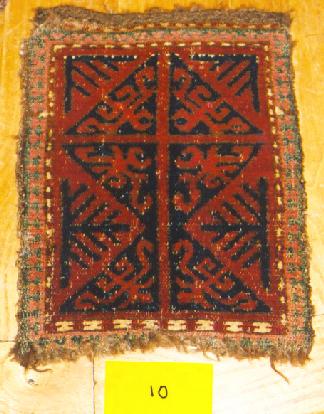
The Salon du Tapis d'Orient is a moderated discussion group in the manner of the 19th century salon devoted to oriental rugs and textiles and all aspects of their appreciation. Please include your full name and e-mail address in your posting.
by R. John Howe
Page 2
Rug 10 (The image, Rug 9, was a less satisfactory photo of this same piece) is a quite small Kyrgyz bagface with with motifs found on felts.

It is Plate 9 in George O'Bannon's translation of and commentary on Antipina and is shown there with what
is the top here on the left side and the warps horizontal. The Antipina caption mentions that the pink and green
borders are unusual but also occur in the piece that is Plate 8 in that volume.
Rug 11 is an Uzbek julkir with beautiful colors, good wool and a dramatic lattice design. Blackmon feels that it
is very old.

It was made in three strips, has a symmetrical knot and three wefts between rows of knots.
Rug 12 is another Uzbek julkir with a lattice design. It also has symmetric knots but was woven in four strips.
Blackmon feels that this rug is also very old. He says that both 11 and 12 are exceptional in age and design.
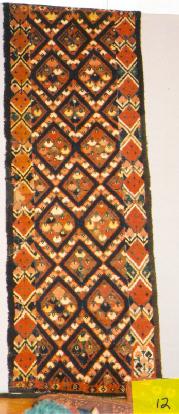
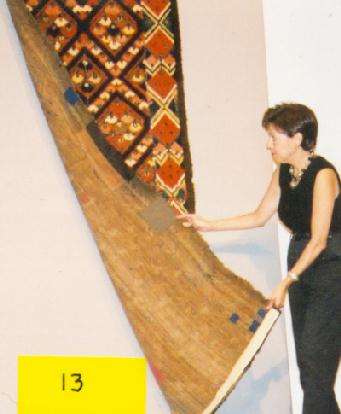
Rug 13 is another image of Rug 12 showing its back. Blackmon indicated that these are also of the warp predominant
plain-weave type.
Rug 14 is a julkir composed of two red and two green pieces sewn together to form a broad red center stripe with
narrower green ones at the sides.

The four strips were first woven, then dyed separately, and later joined together. Green-red combinations
are rare and others that occur are in a runner format. This rug is thought to have been woven by Central Asian
Arabs.
Another rug with an Arab attribution was Rug 15, a dramatic diamond lattice contributed to this session by John
Wertime.
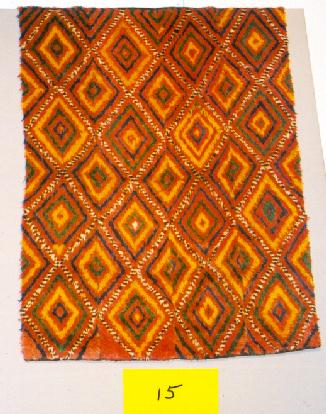
It has a strong, but thought-to-be natural dye, yellow, and lovely wool.
Rug 16 is a rug seemingly similar to those presented immediately above but it was woven in a single piece not in
strips.

Its warps and wefts are goathair. John Wertime published this piece, as Image 17, page 95, in his article
Back to Basics," 80-97, in Hali, Issue 100, September, 1998.
Rug 17 is another John Wertime piece published in the same article as Plate 9.

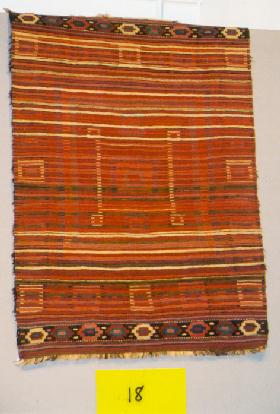
Wertime feels that this piece may be Aimaq, possibly Pashtun. It has a design featuring concentric rectangles and has kilims at both top and bottom. Wertime pointed out from the audience that this piece has "slit loop" pile and that the brown in it is the outer hair of a Kashmir goat. Rug 18 is the back of Rug 17.
Rug 19 is a lattice-pattern with latchhooks surrounding the diamond elements in the lattice.
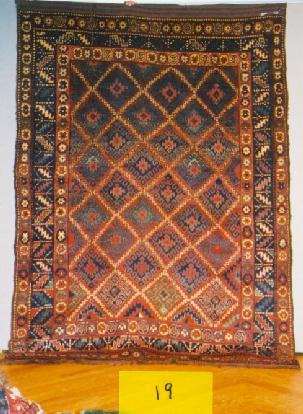

It has a symmetrical knot and three brownish-red wefts. The border exhibits a "serrated leaf" design. Rug 20 shows part of the back of Rug 19.